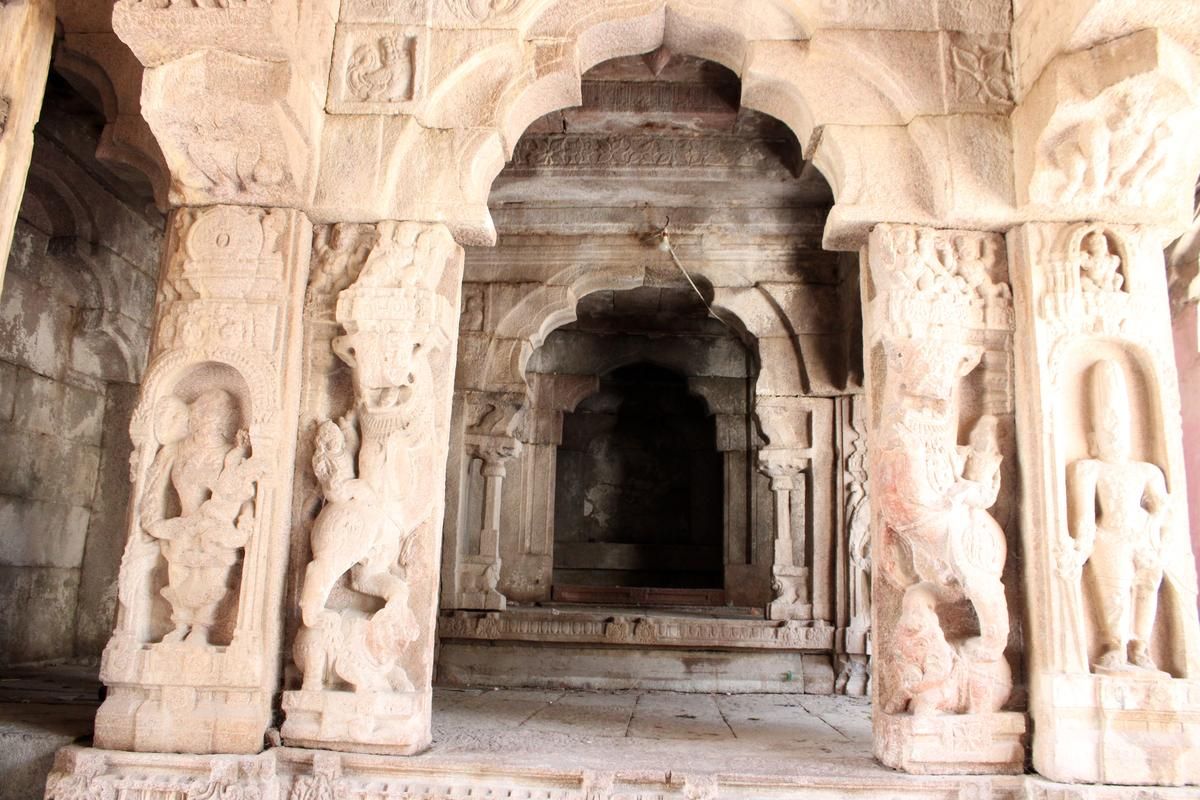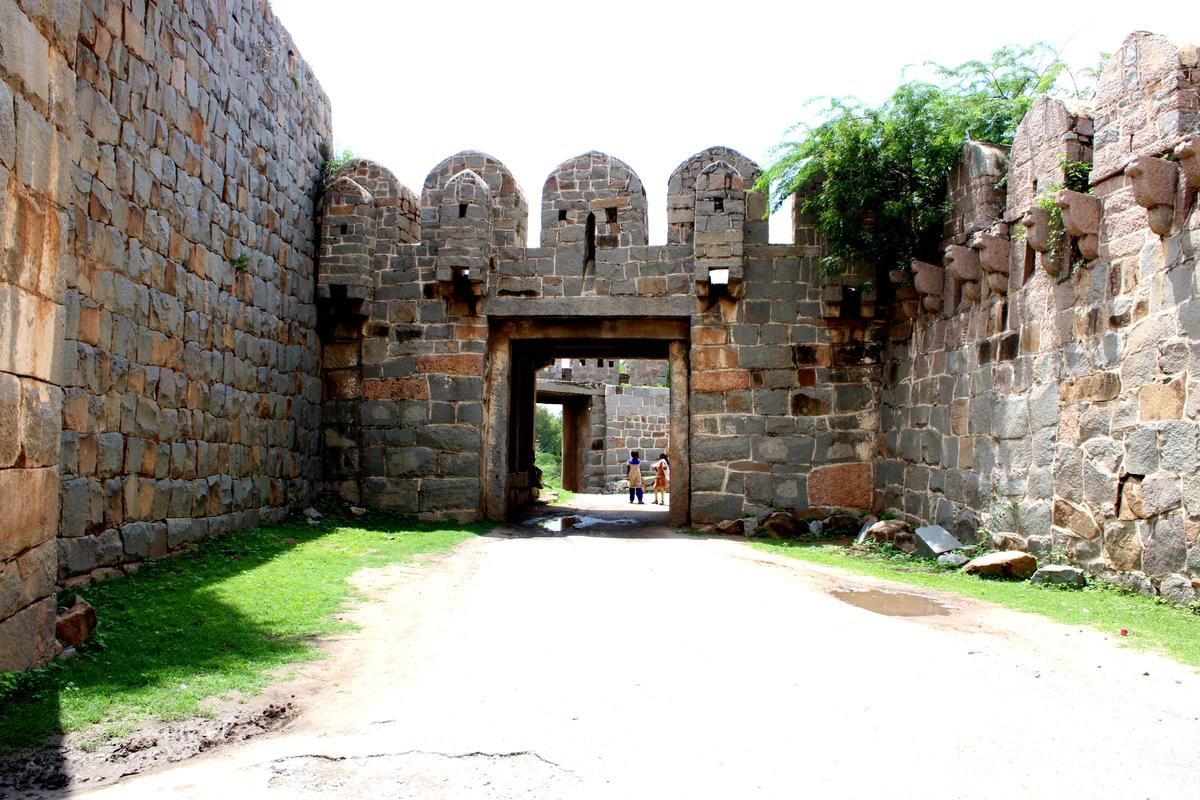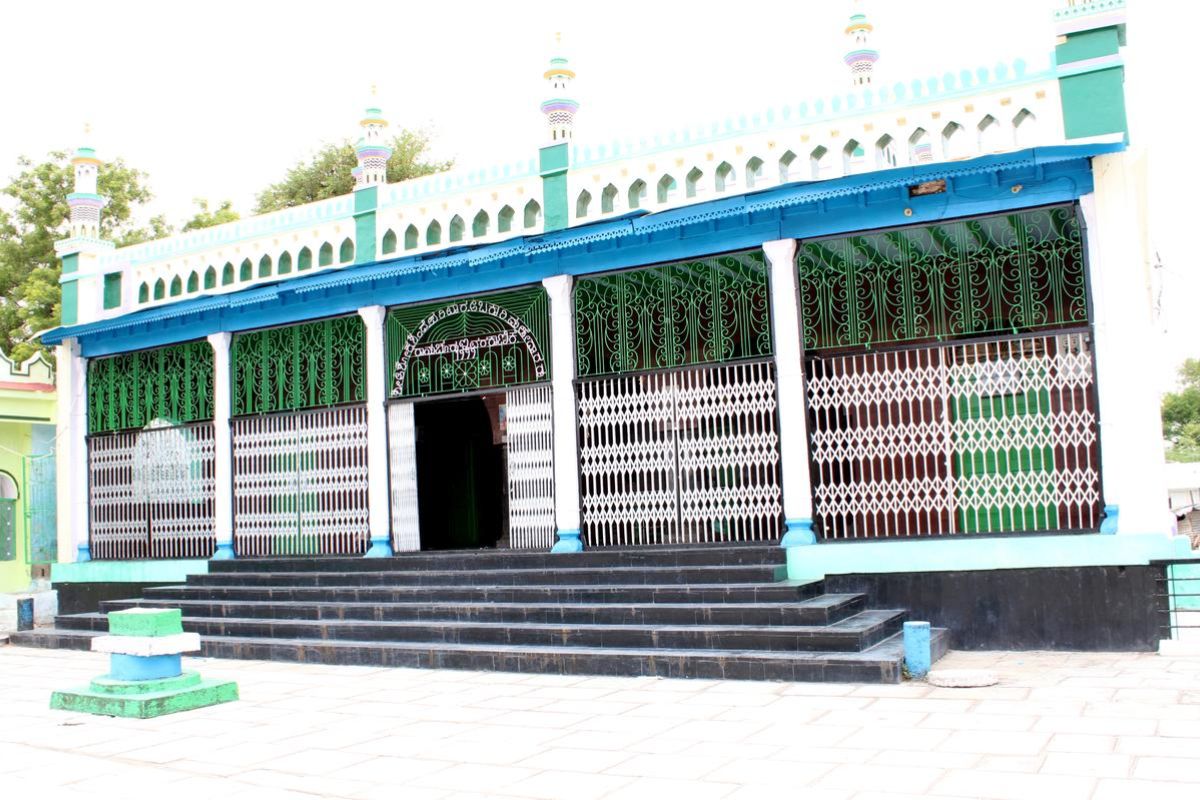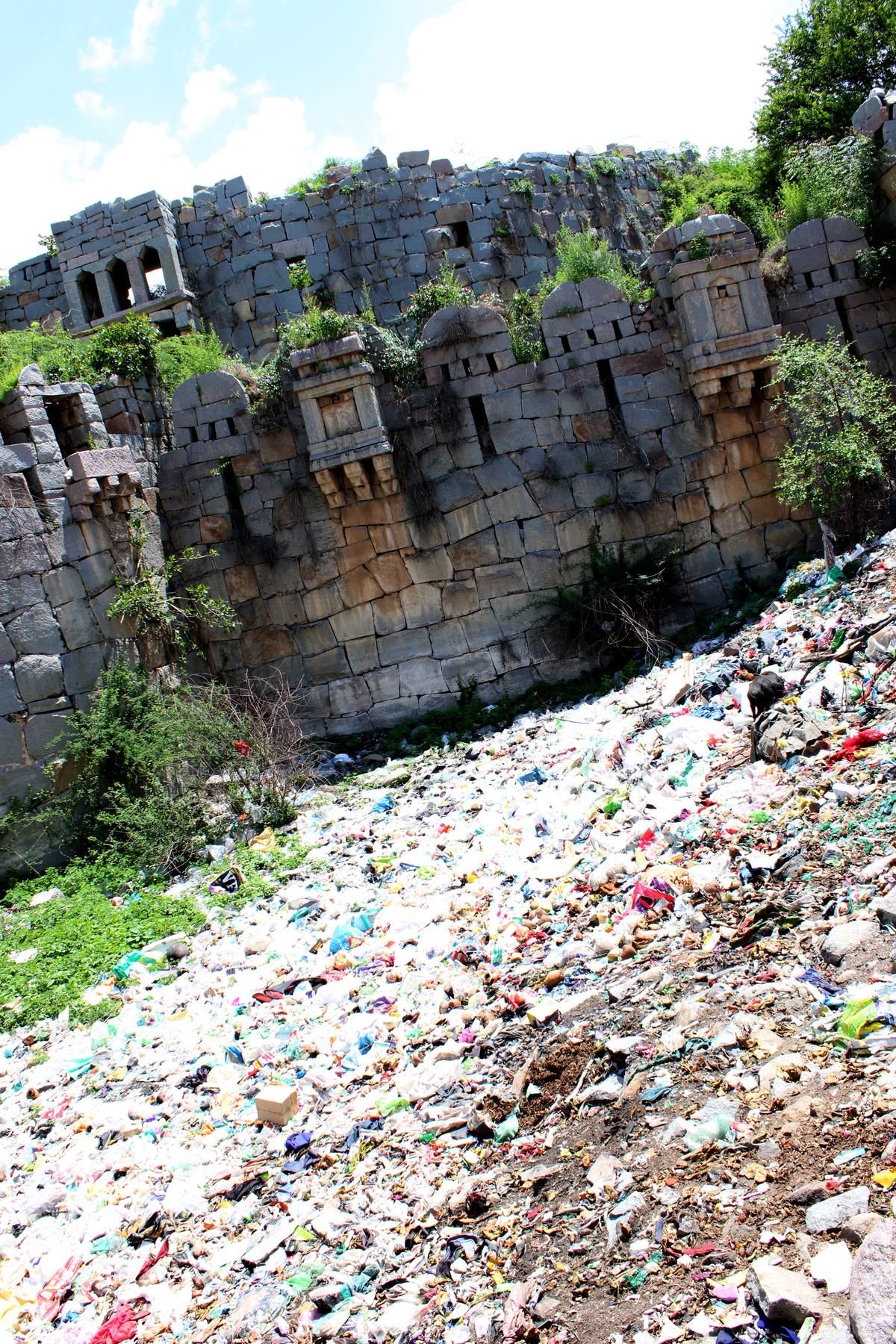The Mudgal town, a historical area, can be accessed by a short drive from Lingasugur that is in Raichur district. A narrow road leads you to it with black cotton fields on both sides, but 10 more minutes of driving bring you to the huge Mudgal fort, which is still standing as evidence of many bloody wars and peaceful neighborhood.
The fort has lived for over one thousand years under different reigns including Chalukyas, Rashtrakutas Deccan Sultanate and Vijayanagara Empire. The fort came into limelight during the Bahmani Sultans who ruled large parts of Deccan Plateau through Gulbarga (now Kalaburagi). It was later taken over by Vijayanagara Empire. After breaking up into five States (Nizam Shahi of Ahmednagar, Qutb Shahi of Golconda (Hyderabad), Barid Shahi of Bidar, Imad Shahi of Berar and Adil Shahi of Bijapur), the fort led to several conflicts between Vijayanagara Empire and Adil Shahi Sultanate. Both empires’ forces fought fierce battles inside its walls.

The view of Mudgal Fort on the east side.
Geographical situation
Between 14th-16th Centuries there were 11 battles in the Mudgal Fort since it stood on the border lines between Adilshahis and Vijayanagar empire. Bijapur as well as Vijayanagara took pride in it because they saw it as an epitome of strength controlling vast expanse spreading between Tungabhadra River on the south and Krishna River on the north.
“It’s fertile agricultural land between Krishna & Tungabhadra rivers, called Raichur Doab. It also had gold mines.” There are even rich mineral resources within this region such gold mines like Hutti is located around forty kilometers away from Mudgal that have been active since ancient times “Both the Adil Shahi Sultanate and Vijayanagara Empire needed it for military purposes due to its strategic location,” observed Basavaraj Kodagunti, Kannada professor at the Central University of Karnataka and a keen researcher on Mudgal Fort inscriptions, speaking to The Hindu.
The changes as well as fortifications made after every battle elaborate how the fort changed hands from one dynasty to another. Winning parties either erected new structures or modified existing ones that would immortalize their victory.
There are many inscriptions found within the fort which are pointers to a turbulent past. Up until now, historians and scholars have researched 99 inscriptions written in Kannada, Sanskrit, Telugu, Persian, Arabic and Gujarati languages that are found etched on walls of this fort.
Among them is one that talks about Malik Murad Khan’s bravery who was Ibrahim Adil Shah II’s army general from Bijapur (Badami). He won several battles against Vijayanagara Empire between 1590-1610.

A structure on the inside the Mudgal Fort.
Mixed architectural style
From different cultural backgrounds there were people living inside the fort who followed mixed architectural styles of its monuments. Temples including Masjids were always present irrespective of whether or not it was under Muslim rulers or Hindu rulers and vice versa thereby showing peaceful coexistence between Muslims and Hindus in the fortress.
Ranganathaswamy Temple and Hussain Alam Dargah stand side by side with a common wall demarcating their boundaries. Today about four hundred families belonging to different castes (Muslims & Hindus) live together harmoniously following respective customs within the precincts of this ancient fort.

A passage leading from Fateh Darwaza to the courtyard in the Mudgal Fort.
Skill and craftsmanship
The fort’s architecture is an example of high skill and craftsmanship. The fort exhibits solid defense walls, bastions and watch towers that can withstand sieges and attacks by the enemy visitors’ eyes. It has several gates with each one having intricate carvings and strategic placements for defence.
Fateh Darwaja, the main entrance on the north side of the fort leads to a huge courtyard through a narrow serpentine path consisting of many large gates and concentric walls built to slow down the advancing enemy forces and provide additional layers of defence. This area contains several inscriptions belonging to Murad Khan. One inscription states that Murad Khan built a fortified gateway in memory of his victory over Vijayanagara army.
Elsewhere, on the eastern side, there is also another passage constructed in this same manner for entering or exiting from this fortress structure which has an enormous wooden gate with iron nails hammered into it.
“Whenever any siege took place against these forts, elephants were used by attacking forces to smash open heavy gates of those forts. Gates would be embedded by big pointed iron nails as defence measure because when an elephant bumps its head against the iron spikes it would be injured severely.” Dr. Mahadevappa Nagaral, a scholar who did his PhD on Mudgal Fort, told The Hindu.

An Islamic structure inside the Mudgal Fort where God Alai sits to perform the rituals during Muharram.
Muharram in Mudgal
Mudgal Fort hosts one of the biggest Muharram celebrations in Karnataka. During these 10 days more than 100000 people mostly Hindus but also Muslims coming from various parts of North Karnataka as well as neighbouring areas converge at Mudgal town.
A combination of faithfulness to religion, cultural manifestation and holding together depict the historical background of Mudgal town where justice has been founded upon sacrifice due to Karbala events that occurred in Iraq central part around 680 AD., during which Muharram started being celebrated.
Tazia processions are one of the important aspects of Muharram in Mudgal. These Tazias that are replicas of the tomb of Husayn ibn Ali are carried through the streets in a procession inside the fort. Participation from people belonging to different communities during these processions is symbolic of unity and mutual respect.
Mudgal Fort’s Muharram is incomplete without cultural activities. Hulivesha, Hejjemela, Halallibuvva, Sufi music performances by artists from distant places.
“Nearly one lakh devotees gather on the Kathal Raath (the night of murder) that is observed on the 9th day of Moharram. The celebration commemorates
the martyrdom of Imam Hussain, the grandson of Prophet Muhammad, during the Battle of Karbala,” Nagaral says.
In addition to being associated with Muharram celebrations, Arabhavi step-well which has been beautifully constructed by Chalukyas within its premises also famous for its association with Muharrams. According to local accounts; prior to Muharram every year images associated with this place come here from all over North Karnataka for taking a dip into this holy well before returning back to be placed at their respective places for the remainder part celebrating Muharram.

The abandoned pond inside the Mudgal Fort.
Crying for concern
It is at present a symbol of official neglect, the Mudgal Fort which represents Karnataka’s rich history and culture and India’s through its persisting architectural, cultural and historical importance.

Garbage and plastic waste in the moat around the Mudgal Fort.
Most of the fort except where people live in it and some religious-cultural activities are performed has been swallowed by thorny bushes and shrubs that make it difficult to access by common people. Empty alcohol sachets and broken beer bottles are strewn all over including on top of watch towers and abandoned monuments of historical significance. The deep moat surrounding the fort which if properly desilted could be used as a source of water to cater for the thirsts of Mudgal residents has become full of discarded polythene sachets and other refuse materials.
The surprising fact here is that there is no presence whatsoever from ASI (Archaeological Survey of India) in this area. Neither has the State Government’s Department of Archeology, Museums, & Heritage taken any steps to protect or preserve these historically significant structures.
People’s appeal
“We have been demanding from government to keep safe Mudgal Fort for many years now as united people,” said Mohan Singh who has fought for this cause since 2012. “We had given memoranda about this matter to Assistant Commissioner, Deputy Commissioner and other higher-ups in bureaucracy. We have also been demanding our MLA put measures in place so as develop Mudgal Fort into a prime tourist destination within the region but all these pleas fell on deaf ears.”







